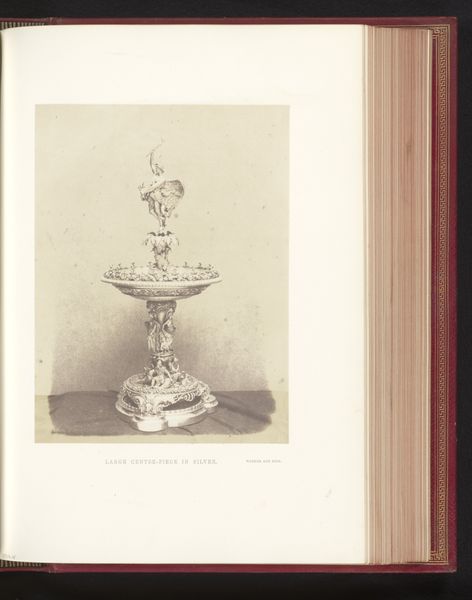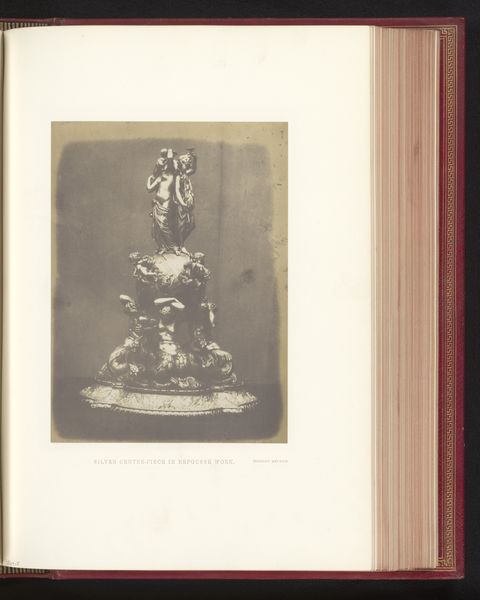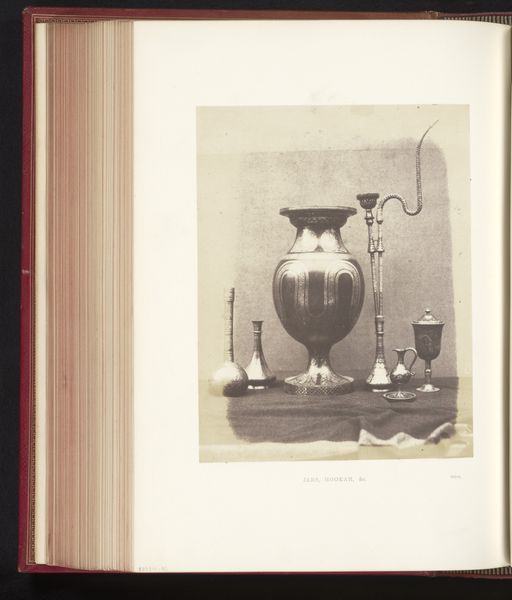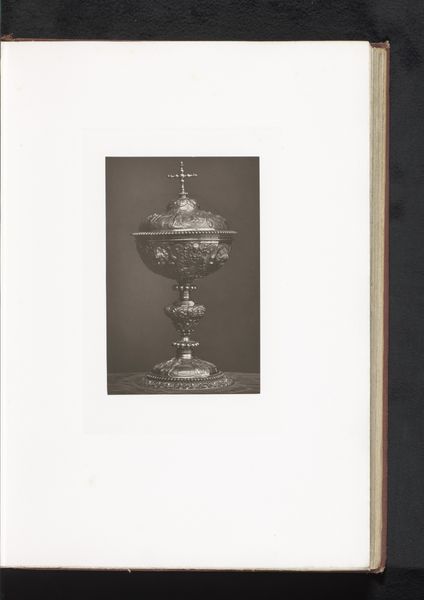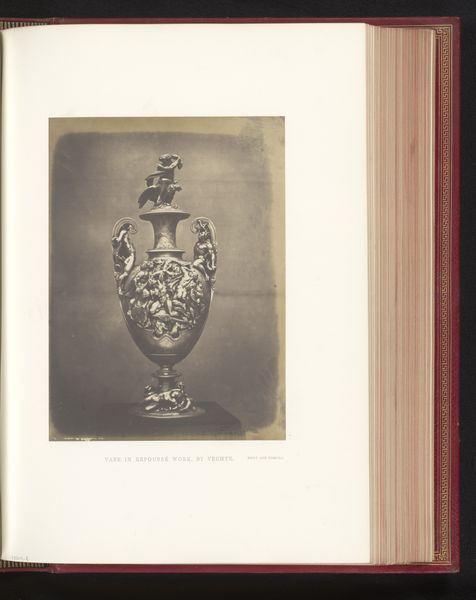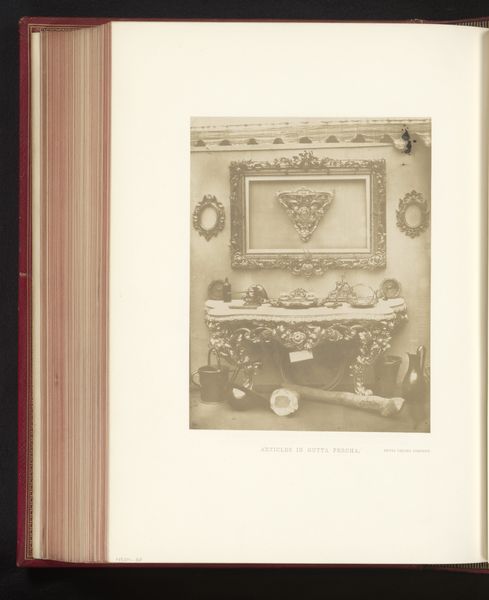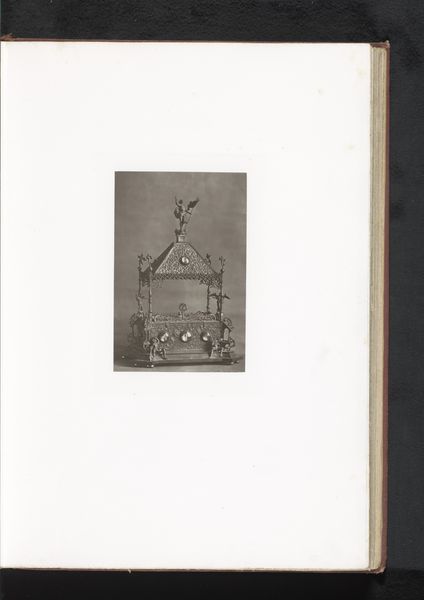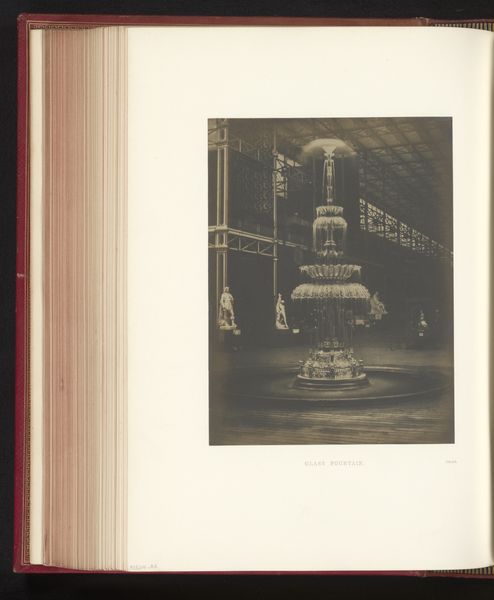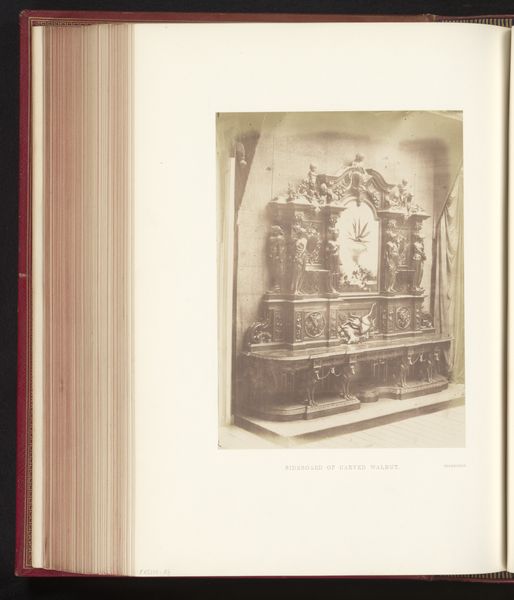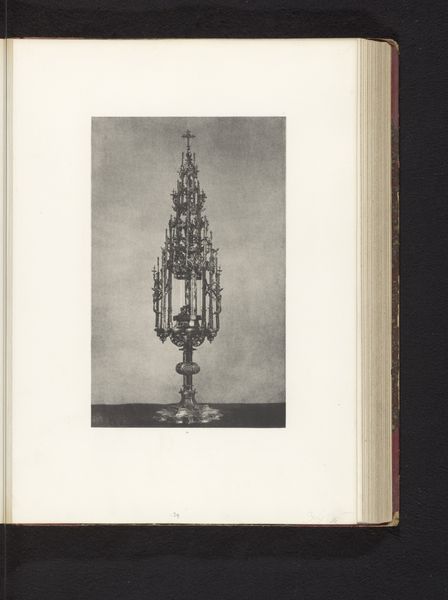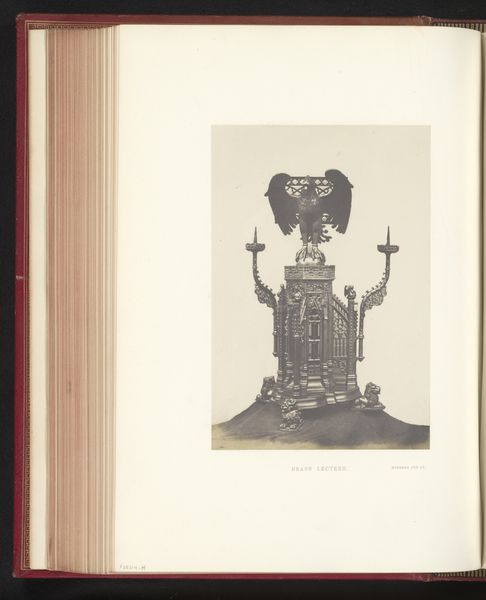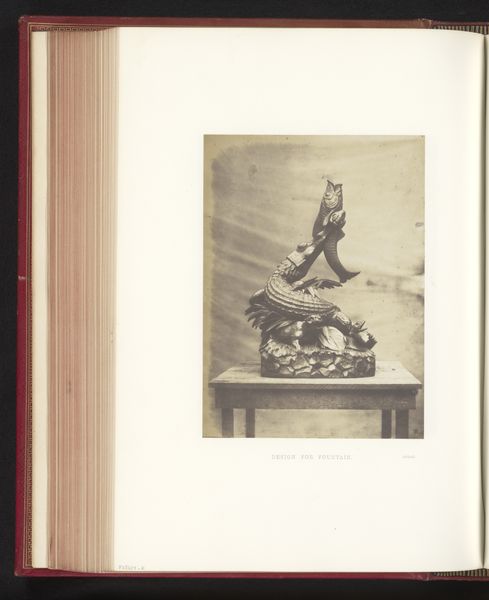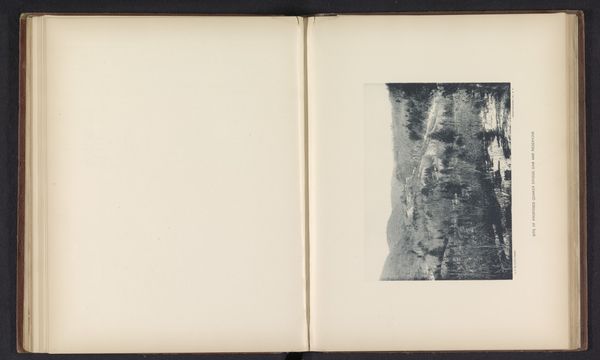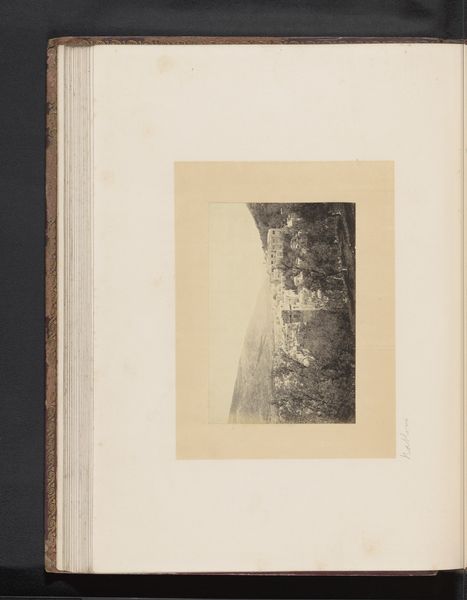
Gietijzeren fontein van André tentoongesteld op de Great Exhibition of the Works of Industry of All Nations van 1851 in Londen 1851
0:00
0:00
print, metal, photography
# print
#
metal
#
landscape
#
photography
#
realism
Dimensions: height 193 mm, width 153 mm
Copyright: Rijks Museum: Open Domain
Curator: Let’s delve into this photographic print titled "Gietijzeren fontein van Andr\u00e9 tentoongesteld op de Great Exhibition of the Works of Industry of All Nations van 1851 in Londen" dating back to 1851. It seems to capture a cast-iron fountain showcased at London’s Great Exhibition. Editor: Right, my first thought: there’s an austere beauty. A certain stillness, the metal against what looks like draped fabric in the background creates an almost otherworldly stage presence. Is that dramatic lighting artificial? Curator: Precisely. These kinds of manufactured “picturesque” scenes were immensely popular among middle classes. It's very much about spectacle but also the ascendancy of iron as a building material – the Crystal Palace itself a monument to industrial production. This piece blurs boundaries between artistic sculpture and factory output, celebrating technological advancement of that moment. Editor: I get this vision of armies of artisans crafting meticulously complex forms – now, I see repetition and refinement in the design but the photograph really focuses on an industrial monument which I didn’t consider before. What could this have represented for those involved in creating the industrial revolution at that time? Curator: It's a great question and highlights that even objects mass-produced have labor invested and reflect social priorities, even artistic ones! Fountains typically would be ornamental while signaling power in their ability to wastefully, but tastefully control this abundant source of power for recreational or status symbol uses. I see it symbolizing faith and ingenuity that characterized mid-Victorian England. Editor: Now I am reflecting further: A celebration of process, a fusion of utility and aspiration. I feel my modern cynicism melting away as I get lured into these displays celebrating craftsmanship for industry rather than high art status and that sense it was not being used, yet! This monument might inspire those people during difficult times too through belief progress via labour Curator: Indeed. It’s an important reminder that materials like cast iron become significant cultural signsifiers in expressing collective visions and can also reveal complex relationships between the ruling power structure with social or industrial structures present at that time… Editor: …A convergence of art, technology, society – I leave feeling this photograph holds the Victorian ambition still for just an instance today – both noble, optimistic and just little bit hubristic perhaps too. Curator: Yes, thank you!
Comments
No comments
Be the first to comment and join the conversation on the ultimate creative platform.
